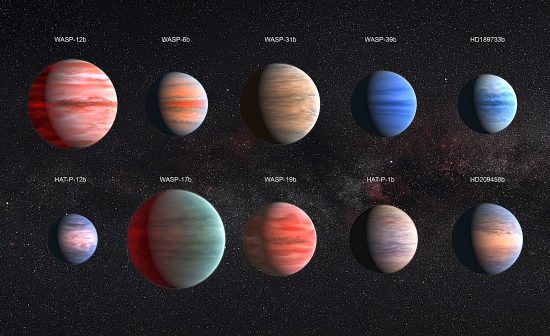
Jul 12, 2019
In previous Pictures of the Day, evidence for plasma discharges on planets and moons was discussed.
Electrical activity in the form of lightning bolts and diffuse clouds of charged particles could be the agents for bizarre conditions on celestial bodies. Many dwarf planets and moons might have experienced particle beams that excavated craters and other geological features.
It is not beyond reason to suggest that star systems could experience extreme duress. Rocky bodies are expelled from stars and gas giants because of an electrical imbalance that appears to be a common phenomenon in the galaxy. If gas giants and stars give birth through electrical parturition, and the planet hunters claim hundreds of gas giant-like planets in extremis, revolving at distances closer than Mercury is to the Sun, those planets are most likely experiencing rapid modification due to electrical interactions with their parent bodies. The Milky Way could be a wilderness of rocky bodies of every shape and size ejected from stars, especially brown dwarf stars, orbiting more powerful, more violent companions.
According to the Electric Universe theory, diversity exists among the Sun’s planetary family because they were created from electric discharge events. A gas giant planet or a brown dwarf star ejected the rocky planets because plasma instabilities within the parent body caused it to become overcharged, akin to a short circuit within its structure. Rather than “accretion disks” around stars, they should more properly be called “expulsion disks”.
As mentioned, when a star is under extreme electrical stress it might undergo a process known as “stellar fissioning,” so that its surface will increase, absorbing the additional load. When those splits occur, gas giants might form, then smaller planet-sized objects, then moons, then asteroids, and so on. Assuming the fundamental principles of Electric Universe theory to be true, this method of parturition is a credible alternative to the problems associated with the Nebular Hypothesis.
Stellar electric discharges are also efficient at sorting elements based on their critical ionization velocities, which can help to explain why planets do not contain the same elemental ratios. Plasma discharges also release neutrons that can form short-lived radioactive elements when they bombard more stable nuclei. Such discharges are also powerful enough to cause transmutation.
It is interesting that most of the rocky bodies in the Solar System orbit gas giant planets. Electrical ejection in a massive internal lightning flash answers the question of the source of the energy. It is not dispersive like an explosion. The electromagnetic pinch effect will produce a jet of matter, rather like a coronal mass ejection, only on a much grander scale. The result is a proto-planet plus a stream of gases and meteoric debris.
In an Electric Universe, dust and gas (and planets) ought to be found around other stars. Stars “give birth” electrically from their charged interiors. Since stars are not powered by hydrogen fusion but by incoming electric currents, whatever fusion there is is most likely taking place close to or on the surface. There is no super-compressed, intensely hot core, radiating energy from thousands of kilometers deep inside. Instead, heavy elements are synthesized in the exterior plasma discharges and then “precipitate” into the star’s interior like a rain of metal atoms.
Giant extrasolar planets are too close to their stars for them to form in a protoplanetary accretion disk. Astronomers, instead of questioning the protoplanetary accretion disk model, think that the giant planets migrated after their formation elsewhere. As Electric Universe advocate, Wal Thornhill pointed out:
“In our solar system, Uranus and Neptune are too far from the Sun to have formed where we find them. Why have our giant planets seemingly migrated outward and the extrasolar planets inward? When theoretical expectations fail scientists are required to re-examine all of the assumptions in their models. However, that is not done when some assumptions have become self-evident truths.”
Stephen Smith












